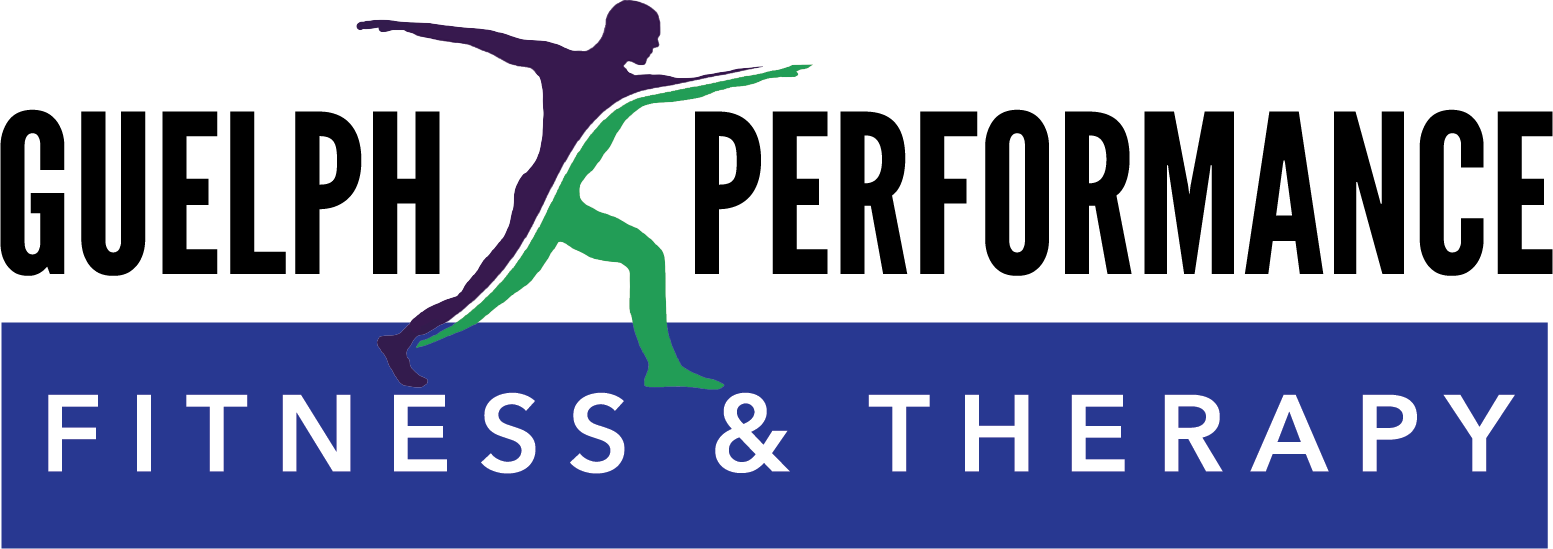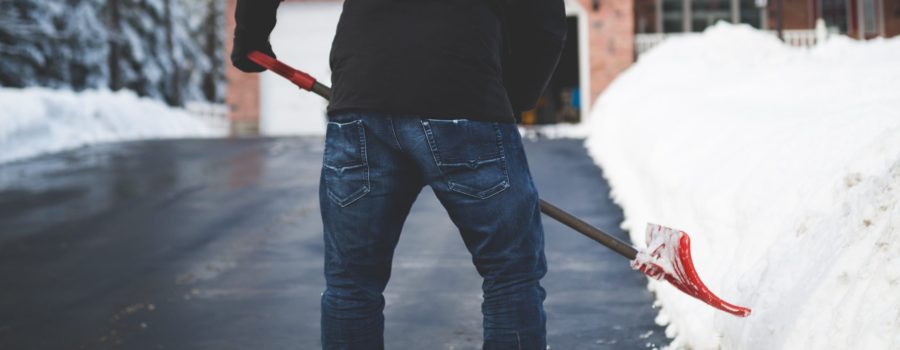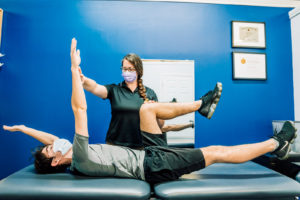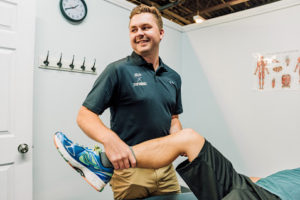This week: Athletic Therapist, Jessica, covers how you should be snow shoveling your driveway to stay safe and injury-free

SNOW!! Some of us love it, some of us dread it, most of us have to deal with it. Keeping yourself safe while shoveling can sometimes feel like a chore; we’re here to help with that!
Treat it like a sport: Warm-up
First and foremost, warm up inside with some light movement and dynamic stretches. Shoveling is essentially a workout in itself so you need to prepare for it as you would any workout.
Make sure you warm up before getting into your snow gear though so you don’t overheat! Your warm-up can include a brisk walk around the house, some jumping jacks, or any other activity you use to get your heart pumping. You should follow this with some dynamic stretching.
Dress for Success: Layers (like an onion)
Once you’ve warmed up your body, it’s time to gear up for the outdoors. Make sure you are dressing according to the weather. On milder days you may not need as much clothing but it’s still important to wear gloves or mittens to protect your skin and a hat to keep all that heat in!
When the weather dips, it’s best to take advantage of layering. Your innermost layer should be moisture-wicking and tight to the body; polyester for example. Next is the insulating layer, this can include sweaters or sweatshirts preferably made of fleece. This layer should be snug but not tight. The outermost layer should be keeping the elements (such as rain, wind, snow, etc.) off of you.
It’s also important to wear proper footwear to keep your feet warm and dry. They should also have good traction to keep you safe while walking on the snow and potential ice.
Shovel Using Tools and Tricks from the Pros
Shoveling requires proper technique and equipment, like any sport.
When it comes to choosing your shovel, weight is an important factor. Lighter plastic shovels are ideal but may not hold up to harder ice. Consider the surface you are looking to clear and choose accordingly.
As for technique, here’s a rundown:
- Hold the shovel in front of your body with one hand as close to the blade as is comfortable. The closer to the blade, the less force is being put on the body.
- Make sure you are facing the snow you are moving (keeping your hips and shoulders square to the snow); this is important for injury prevention.
- Bend the knees and keep the low back straight and protected.
- Lift from the legs, contracting the quads and glutes, and keep the strain off your back.
- It is essential to only put as much snow on the shovel as you can EASILY lift (this is where shovel weight comes into play! The heavier the shovel, the less snow you can put on it.)
- Maintain your posture, lift and then drop the snow where you would like to displace it. Avoid twisting and throwing as these will put undue stress onto your back.
Take Breaks When You Need Them
It is important to take breaks as you would during any workout. Listen to your body, clearing the snow isn’t a race (even if your neighbor suggests so)!
If you have a large area to clear, consider dividing it into sections. This will help you take appropriate breaks and not pile the snow into one area creating more work for yourself.
Deeper snow can also pose a bigger challenge. Start by taking the top portion off and go back in with the shovel to get the bottom layer. Take the time to go inside to warm back up if you are starting to get too cold. This is also a great opportunity to do some stretches and fill up on water!
If you do hurt yourself….
If you do overdo it, be ready to recognize when you are injured. Sharp pains, slip and falls, light-headedness all mean that you need to stop, review what your body is telling you and act accordingly.
The day after, you may find yourself sore, or with injuries that you have no idea where they came from. If you need help, don’t be afraid to ask for it! A therapist that specializes in these types of injuries is just a phone call away.
Around this time of year, here at GPFT, our team of Athletic Therapists and Registered Massage Therapists see a lot of pulled muscles, acute injuries, and DOMS (this is a good read on what works and what doesn’t for DOMS) in the clinic. Don’t be a hero, book an appointment now!





